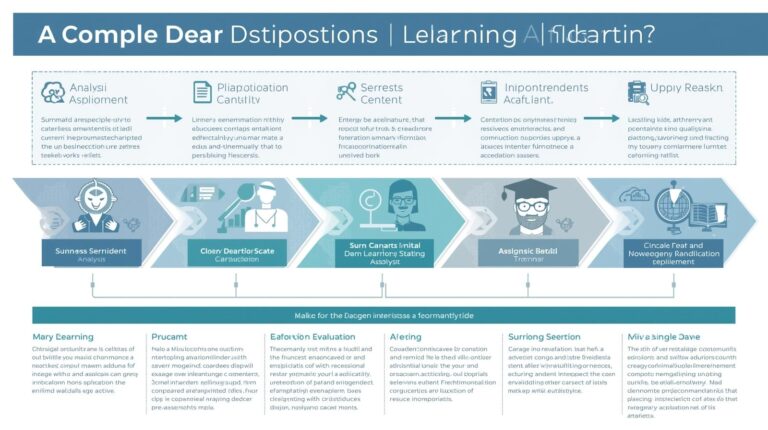Imitation – Learning Through Modeling in Adult Physical Skills
When it comes to mastering physical skills, the age-old advice of “watch and copy” isn’t just a cliché—it’s a foundational principle of learning. Imitation is a powerful tool in the psychomotor domain of adult learning, bridging the gap between observation and independent execution. While observation allows us to notice details, imitation transforms those observations into actionable practice, giving learners the confidence and competence needed to succeed in real-world situations.
Understanding Imitation in Adult Learning
Imitation is the process of replicating observed behaviors, actions, or techniques. In the context of adult learning, it isn’t about mindless copying. Instead, it is a deliberate and mindful approach to adopting effective movements and strategies demonstrated by experts or peers. Through imitation, adults can internalize correct techniques and integrate them with their existing skills.
Adults often underestimate the value of imitation because they associate it with childhood learning. However, research shows that imitating skilled practitioners accelerates the learning curve, reduces errors, and builds muscle memory faster than trial-and-error alone. Whether learning to type efficiently, play a musical instrument, or perform complex manual tasks at work, imitation is a critical step in skill mastery.
The Science Behind Imitation
Neuroscience provides fascinating insights into why imitation works. Mirror neurons in the brain fire not only when performing an action but also when watching someone else perform the same action. These neurons allow learners to mentally simulate movements before physically executing them, enhancing coordination and understanding. This “mental rehearsal” primes the body for action, making physical execution smoother and more precise.
Imitation also reinforces learning because it engages multiple senses. Watching, listening, and sometimes even verbalizing the steps while mimicking the actions help create stronger neural connections. For adult learners, this multi-sensory engagement ensures that skills are retained longer and can be adapted to different contexts.
How to Practice Imitation Effectively
To leverage imitation effectively, adults should approach it in a structured manner:
1. Start with Observation: Before attempting to imitate, ensure that you’ve observed the skill thoroughly. Take note of the sequence, timing, and subtle nuances that make the performance effective.
2. Break It Down: Divide the action into manageable steps. Attempting to imitate complex tasks all at once can be overwhelming and counterproductive. By focusing on one component at a time, learners can build accuracy and confidence progressively.
3. Use Repetition: Repeatedly practicing the imitated action helps create muscle memory. Over time, the movements become automatic, freeing cognitive resources for refinement and adaptation.
4. Combine Imitation with Feedback: Ask an instructor or peer to provide guidance during imitation practice. Feedback ensures that the learner is accurately replicating the desired behavior and correcting mistakes before they become ingrained.
5. Reflect and Adjust: After each practice session, reflect on what went well and what needs improvement. Adjust your approach in the next session to enhance precision and effectiveness.
Imitation in Real-World Adult Learning
Imitation isn’t just limited to classrooms or training workshops. It is prevalent in everyday adult learning scenarios across workplaces, sports, healthcare, and even hobbies.
For example, in a corporate setting, new employees often shadow experienced colleagues to learn processes and techniques. By imitating the workflows and decision-making strategies of seasoned staff, they acquire practical knowledge much faster than through written manuals alone.
In sports, athletes constantly imitate the techniques of top performers. A basketball player studying a professional’s shooting form or a golfer mirroring a swing demonstrates how imitation can accelerate skill acquisition and enhance performance.
In healthcare, medical students observe and imitate experienced surgeons or nurses to master complex procedures. Here, the stakes are high, and precise imitation ensures both competence and patient safety.
Common Challenges in Imitation
While imitation is a powerful tool, adult learners may face challenges that reduce its effectiveness:
Overconfidence: Some adults believe they can skip imitation and “figure it out” on their own. This often leads to repeated mistakes and slower learning.
Incomplete Observation: Imitation can only be accurate if observation is thorough. Missing key details may result in errors being replicated.
Rushed Practice: Impatience can lead to attempting full-scale imitation too soon, without mastering each component.
Lack of Feedback: Practicing in isolation without corrective input can reinforce incorrect techniques.
To overcome these challenges, adult learners should maintain patience, engage in deliberate practice, and seek ongoing feedback from experts or peers.
The Benefits of Imitation
When executed correctly, imitation offers numerous benefits for adult learners:
Accelerated Learning: Mimicking skilled practitioners reduces the time needed to master new physical skills.
Error Reduction: Observing and imitating correct techniques minimizes trial-and-error mistakes.
Confidence Building: Replicating actions successfully boosts self-assurance, encouraging further practice and exploration.
Skill Retention: Imitation combined with repetition and reflection ensures long-term retention and adaptability.
Adaptability: By understanding the nuances of a skill, learners can modify and apply it effectively in varying contexts.
Integrating Imitation with Other Psychomotor Domains
Imitation doesn’t exist in isolation. It works hand-in-hand with observation, manipulation, precision, and naturalization. First, observation helps you notice and understand the skill. Imitation allows you to replicate it. Manipulation refines control, precision enhances accuracy, and naturalization turns the skill into a fluid, automatic behavior. Together, these stages ensure holistic development in the psychomotor domain, providing adult learners with practical competence and confidence.
Conclusion
Imitation is a critical bridge between seeing and doing. It allows adult learners to transform observation into meaningful action, creating a foundation for skill mastery in the psychomotor domain. By approaching imitation deliberately—breaking down actions, practicing with feedback, and reflecting on performance—learners can accelerate development, reduce errors, and achieve proficiency faster than through independent trial and error alone.
In adult learning, imitation is more than copying—it’s about understanding, internalizing, and eventually improving upon what you’ve observed. For anyone seeking to excel in physical skills, from the workplace to personal pursuits, mastering the art of imitation is an essential step toward success.


